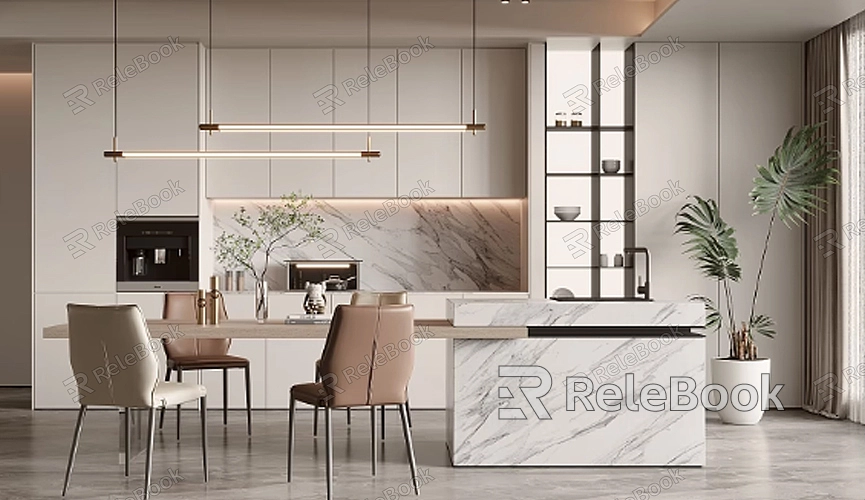How to Add Multiple Textures to a 3D Object?

Understanding Texture Mapping
Before diving into the process of adding multiple textures, it's essential to grasp the basics of texture mapping. Texture mapping is the technique of wrapping a 2D image around a 3D model to give it surface detail. This process involves projecting the texture onto the 3D model, which can be thought of as applying a “skin” to the object. The texture coordinates (UVs) determine how the 2D image maps onto the 3D surface.
Choosing the Right 3D Software
Different 3D modeling software offers various tools and workflows for applying multiple textures. Popular software options include Blender, Autodesk Maya, and 3ds Max. Each of these tools has its unique features, but the general principles of applying multiple textures are quite similar.
Blender: Blender is an open-source 3D software with powerful texture painting and a node-based material editor. It supports multiple UV maps and texture slots.
Autodesk Maya: Maya provides robust texture management through its Hypershade editor, allowing users to connect multiple textures to different material attributes.
3ds Max: 3ds Max uses the Material Editor to handle multiple textures, with support for different mapping techniques like UVW mapping.
Preparing Your Model
Before applying multiple textures, ensure your 3D model is properly UV-unwrapped. UV unwrapping is the process of flattening the 3D surface of the model into a 2D plane, creating a UV map. This map determines how textures will be applied to the model. For complex models, you might need multiple UV maps for different texture sets.

Applying Multiple Textures
1. Using Multiple UV Maps
One method for applying multiple textures is to use different UV maps. Each UV map can correspond to a different texture set. For instance, you might use one UV map for the base color texture and another for the detail or bump map. This method is beneficial for complex models requiring distinct texture regions.
2. Layering Textures in a Single Material
Another approach is to layer multiple textures within a single material. This technique involves combining different textures, such as diffuse, specular, and normal maps, into one material slot. Most 3D software provides shader nodes or material layers that allow you to blend multiple textures. For example, in Blender’s Shader Editor, you can use nodes like “Mix Shader” or “Add Shader” to combine different textures.
3. Using Texture Atlases
Texture atlases are large textures that combine several smaller textures into one image. This approach reduces the number of texture files and draws calls, improving performance. To use a texture atlas, you need to carefully unwrap your model to ensure the UVs align with the atlas layout. This method is particularly useful in game development.
Managing Texture Coordinates
When applying multiple textures, managing texture coordinates becomes crucial. Make sure that each texture has its UV mapping properly aligned. Misaligned UVs can result in visible seams or mismatched textures. Utilize UV editing tools in your 3D software to fine-tune the UV layout and ensure seamless texture application.
Testing and Adjusting Textures
After applying multiple textures, it’s important to test and adjust them to ensure they appear as intended on the model. View your model in different lighting conditions and render it to check for any texture issues. Adjust texture settings, such as scaling and blending, to achieve the desired look.
Exporting and Finalizing
Once you’re satisfied with the texture application, you can export your 3D model. Ensure that all texture files are correctly linked and saved with the model. Depending on the software and export settings, you might need to pack textures into the model file or keep them as separate files.
FAQ
What if my textures don’t align properly on the model?
If your textures don’t align properly, check the UV map of your model. Ensure that the UVs are correctly laid out and that the textures are mapped according to the UV coordinates. Adjusting the UV map or texture settings may resolve alignment issues.
Can I use multiple textures for different parts of the model?
Yes, you can use multiple textures for different parts of the model by assigning different textures to different material slots or UV maps. This method allows for greater control and detail on various parts of the model.
How can I optimize the performance of models with multiple textures?
To optimize performance, consider using texture atlases to combine multiple textures into a single image. Also, ensure that your textures are of appropriate resolution and avoid unnecessary texture maps that can impact performance.
What are the advantages of using texture atlases?
Texture atlases reduce the number of texture files and draw calls, which can improve rendering performance. They are especially useful in game development and real-time applications where performance is critical.

